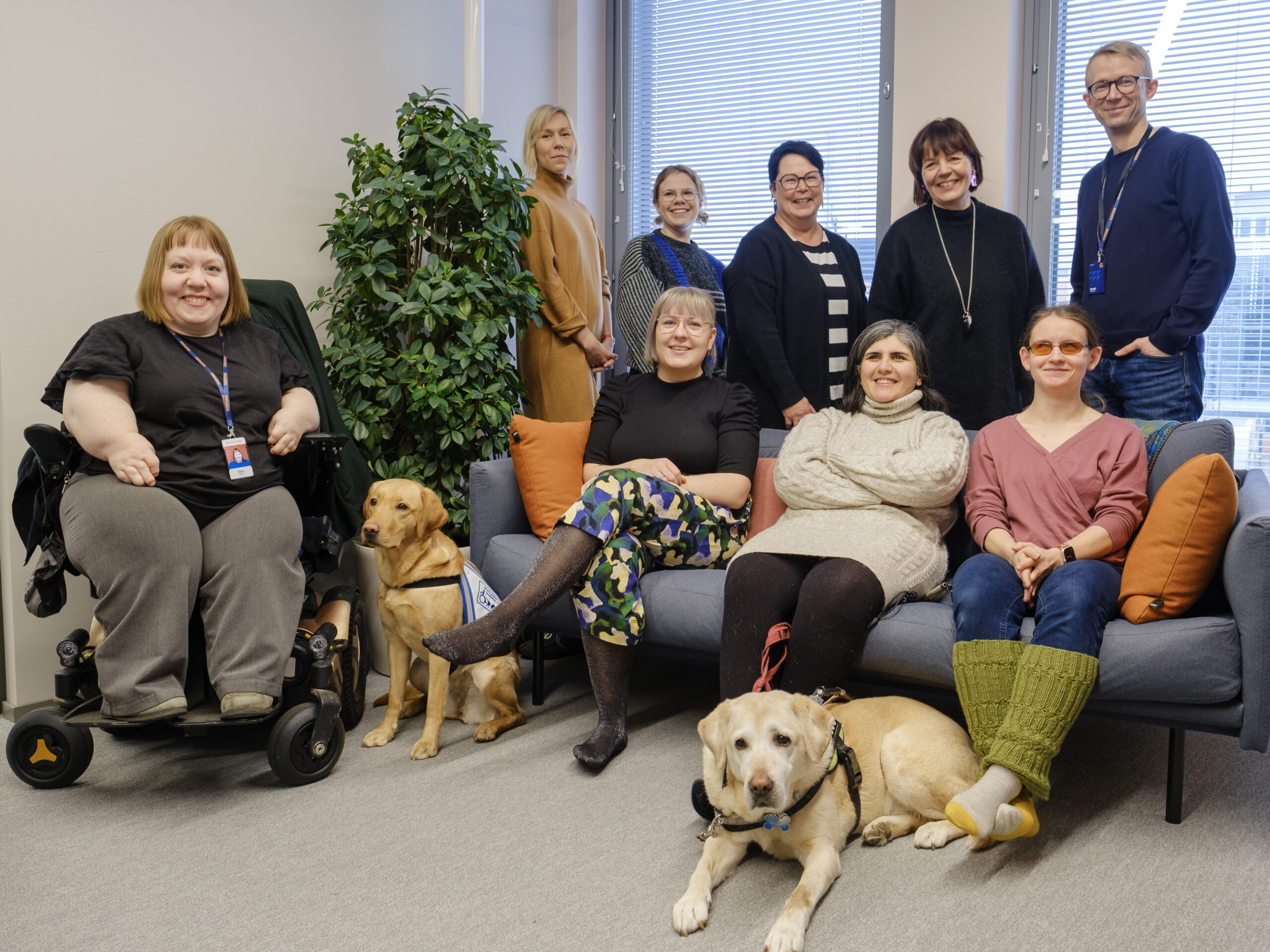What does the interface look like? Which parts are the eye focused on? Do these questions sound familiar to you? For me, at least, these are familiar from many reviews and from my own thinking.
Lately, I’ve been particularly struck by the extent to which the user interface is designed with visuals in mind. However, such design is one-sided. The emphasis on visuals is focused on looking at things and thinking about how they look, whether there is harmony and whether the components fit together nicely. However, not all users of a service or website can see and visual design does not make it easy for them to use the service. It should be noted, however, that visual design has a significant impact on accessibility, but it is not enough on its own.
The designer must take into account the other senses the service can be used with and how the service can be designed for other senses. For some users, the most important sense is hearing rather than sight, and for others it is touch. There are also different types of tools that can be used: some prefer a mouse, some a keyboard and others voice control. A broader understanding of the users of digital services and the different ways they use them is an important basis for accessibility and ethical design.
How can we ensure that the service does not exclude anyone?
Conduct user tests. Get a diverse range of people from different backgrounds as testers, especially those who may have difficulty using the service or who may be forgotten as the service is developed. This is also where you need to recognise the diversity, or lack of it, of your team: consider together and openly who is not being heard in the development of the service.
Gain an understanding of how different tools are used and what may be the main barriers for different users. Also understand which functions are very important for different users. For example, a search function can be very important for some if the site is complex and contains a lot of information. Understand how different constraints affect the use of services: for example, memory constraints have their own impact and there are many different types of visual impairment. It is important to consider how, for example, keyboard users can skip complex or lengthy content if they wish: it is frustrating to have to type through content that is unnecessary.
Also look at the importance of the component level: what is the difference between a button and a link, for example, is important. The main idea is that when something changes in the interface, a button should be used and when the user navigates to a new view, a link is used. Learn which components to use in each situation and how they behave with a screen reader, for example. Clearly mark different structures in your designs, such as the order of headings.
Ensure the structural simplicity and clarity of the service. It is not enough for a service to look beautiful; its structure must also be clear. If anything, this is beautiful, also in the code and ultimately for the screen reader, for example!
Find out the user experiences. How does the service work in real-life situations with different users? One example is to be noted is that simple and clear labels are useful for both the sighted and the screen reader or voice control user. For example: in a voice control, if the label is associated with the correct component and thus activation by voice control is possible. Another noteworthy example is the size of the components to be activated: if a button or link needs to be touchable, it must be large enough. Good design guidelines about touch target sizes can be found on Android or Apple.
What’s in it for the designer to design for all?
First, the designer can make sure that their plans do not create or increase problems of social participation, but that the plans keep everyone on board. It is important that everyone has equally easy ways to participate. To make this more concrete, think about this: would it be fair if library materials, whether physical or digital, were only accessible to some?
Secondly, digital services can make life easier for many. For example, instead of going to a large or reorganised shop, it can be easier and more convenient to order groceries to home. The online food shop also offers visually impaired people a real opportunity to choose and compare food, and to research the nutritional content and compete on price. In the past, such a large-scale operation was not possible independently.
Thirdly, the designer’s own professional skills will increase. In addition, the quality of the services provided is improved and more accessible to a wider public, which also has an impact on the reputation of the service provider.
How do you feel about this topic?
This is a question I often ask when I train on accessibility. There can be many different answers to this question. I think it’s important to observe one’s feelings and think about where they come from. If accessibility requirements feel scary, distressing or stressful, what is the reason? Does one feel that there is something more to work that they don’t really have time for or don’t really know where to start?
If I can be any consolation, each of us has at some point been at the point where the whole subject was new to us. Fortunately, new knowledge can be absorbed bit by bit and no one is instantly a master of accessibility. However, as digital becomes increasingly important in our society, it is important that each of us becomes moment by moment more aware of accessibility and then more knowledgeable about the subject.
As a designer, one has a lot of power and that also means deciding who can use the services and who is excluded. For example, if services at work are not accessible, we limit the ability of people from different backgrounds to be employed or to work equally.
When we make accessible services, we keep everyone involved. It is a society that I, for one, want to be part of building.
Read more: What every designer needs to know about accessibility?



